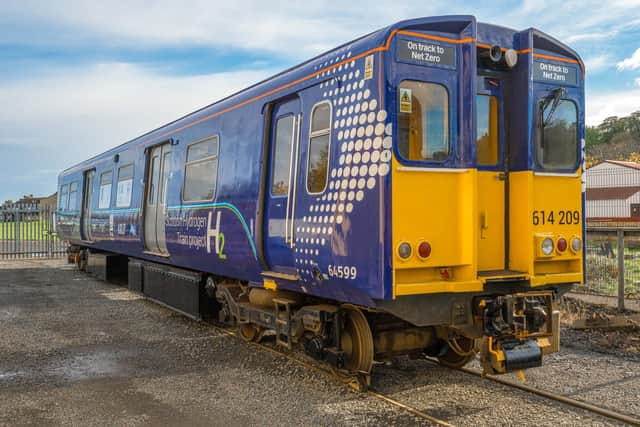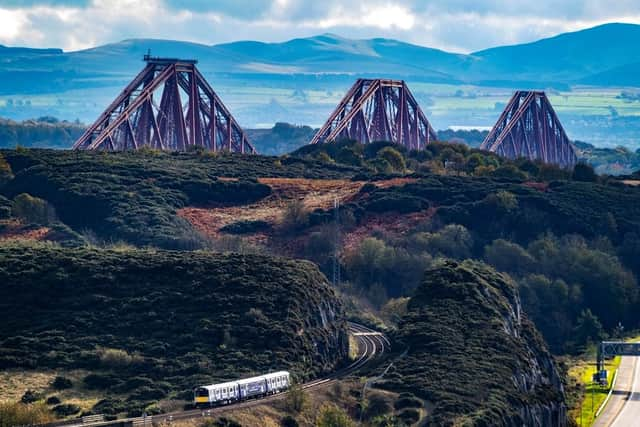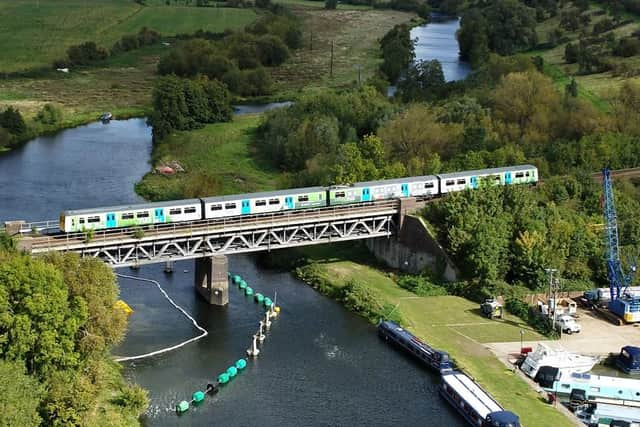COP26: Hydrogen-powered train and bin lorry to be unveiled
Two of the trains will run trips from Glasgow Central station while a third will be displayed at the Bo’ness and Kinneil rail heritage centre near Falkirk.
Hydroflex, Britain’s first hydrogen-fuelled train, which has been developed by leasing firm Porterbrook and the University Of Birmingham, will make its public Scottish debut next Tuesday.
Advertisement
Hide AdAdvertisement
Hide AdThe latest stage of Scotland’s hydrogen-powered train project, involving Arcola Energy, the University of St Andrews and Scottish Enterprise, will be unveiled at Bo’ness this Thursday ahead of its planned inaugural run on the line in March.
A former London Underground train which has been converted to battery power by Vivarail is also making demonstration runs between Glasgow Central and Barrhead until Thursday November 11.
Hydroflex, which was unveiled last year, will be shown off north of the Border by rail industry leaders including Mohamed Mezghani, president of the International Association of Public Transport, and François Davenne, director general of the International Union of Railways (UIC).
Another trip will see the winners of a schools’ competition to encourage more train travel joining MG Leonard and Sam Sedgman, authors of the Adventures on Trains series.
Their next book, Sabotage on the Solar Express, to be published in February, will feature a train powered by solar panels and hydrogen fuel cells.


Porterbrook chief executive and former ScotRail managing director Mary Grant has said such “alternative traction” could be used on routes such as to Stranraer, Oban, Mallaig, and north of Inverness, as set out in Transport Scotland rail decarbonisation strategy.
The Scottish hydrogen train project is using a three-carriage ScotRail class 314 electric train that ran in Glasgow until 2019.
Invited guests will be able to view the train at Bo’ness station and green hydrogen refuelling technology.
Advertisement
Hide AdAdvertisement
Hide Ad

An Arcola hydrogen-powered bin lorry to be introduced by Glasgow City Council next year will also be unveiled, along with a hydrogen bus, in partnership with the University of St Andrews.
However, cheaper hydrogen production may be required to make it a viable fuel since the gas remains far more expensive than diesel.
Arcola Energy chief executive Ben Todd said the train would have the same range between refuelling stops as diesel trains.
He said: “The conversion is intended to show the potential of re-powering existing rolling stock to deliver a sustainable zero-emission solution to decarbonise Scotland’s geographically diverse network, connecting communities and contributing to a green economic recovery.”


A manufacturing site is being set up at the Michelin Scotland Innovation Parc in Dundee, which is expected to employ 135 people as part of its three-year development, with a further ten posts at Bo’ness and seven technicians at a new service centre in Glasgow.
The Vivarail battery train is similar to one which was showcased on the Bo’ness line three years ago.
It has a range of more than 60 miles and recharging in just ten minutes.
The firm said the flexibility of batteries meant they could be installed to re-purpose “good-quality” diesel trains or added to electric trains so they could run on non-electrified parts of the network.
A message from the Editor:
Thank you for reading this article. We're more reliant on your support than ever as the shift in consumer habits brought about by coronavirus impacts our advertisers.
If you haven't already, please consider supporting our trusted, fact-checked journalism by taking out a digital subscription.
Comments
Want to join the conversation? Please or to comment on this article.
